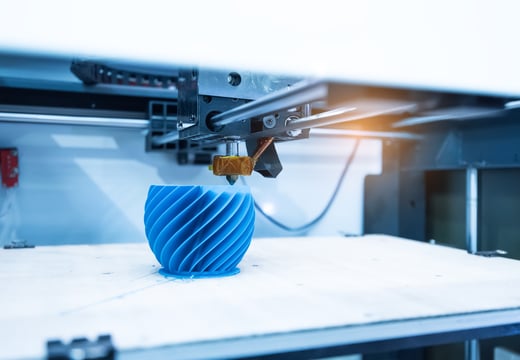
AI powered innovation - the disrupting force transforming the market
January 2024
by the 42T Innovation Team
In the progressive world of innovation, AI has emerged as a disruptive force, fundamentally altering the way we conceive and execute breakthrough ideas. At 42T, we are exploring the transformative power of AI within the innovation process. This article demonstrates how companies that harness the capabilities of AI can gain a decisive edge in market agility and innovation efficiency.
The Generative AI, particularly through large language models (LLMs) and diffusion AI, is altering the process of innovation. For example, tools powered by GPT-4 can rapidly summarise extensive information from public domain and private data, accelerating and refining research; helping to identify insights, pain points and potential technologies relevant to an opportunity or challenge.

Meanwhile diffusion AI image generation tools like Midjourney both aid in inspiring possible visual concepts, prototyping and visualising new concepts, including creating realistic imagery from sketches, and adding contextual environments around product renders. Companies leveraging these AI-driven processes can innovate faster, allowing them to reduce upfront costs and bring more refined products to market.
In real-world scenarios, AI has proven to be a potent tool for enhancing productivity in innovation. Our testing has shown that AI can produce valuable outputs across various stages of the innovation process. For instance, in technology research, GPT-4 has consistently found 60-90% of the results from extensive human research in a fraction of the time, and often uncovers relevant findings missed during human research. To us, this demonstrates the clear efficiency gains AI can bring to the innovation process, and we advocate for its application where necessary.
However, it’s important to note that while AI significantly speeds up the process, it doesn’t entirely replace the need for human effort and strategic thinking. After the initial very fast progress, substantial time invested in further exploration rarely fills all the gaps left. In addition, effective utilisation of AI within innovation processes requires a stepwise approach along the workflow. It tends to gravitate towards popular opinions reflected in its training data. In our opinion, it requires careful review and direction to maintain focus and accuracy. Currently, AI augments rather than replaces human work, enhancing the capacity for innovation without circumventing the need for human insight and decision-making.
“AI will not completely replace humans, but those who use AI will replace those who do not.”
IBM Institute for Business Value
This perspective, echoed in various thought leadership platforms like Harvard Business Review, Fortune, and British Computer Society, reinforces the evolving role of AI in an innovation context. At 42T, this sentiment resonates strongly, AI being seen as an opportunity to supercharge innovation workflows, rather than a threat to us as innovators. Integrating AI into our innovation processes ensures that our clients are not left behind in the rapidly advancing technological landscape, and instead stand at the cutting edge of innovation, maintaining a competitive advantage.
Companies that leverage AI’s potential in accelerating innovation will stand out in the market. However, successful execution is vital to prevent AI from becoming a distraction to the innovation process. AI best augments a rigorous innovation process where stepwise and structured approaches ensure thorough exploration and innovation. Such a structured approach has good affinity with the Desirable, Viable, Feasible (DVF) framework, with AI playing an integral role in evidence-based assessment and decision-making de-risking all three aspects in the early stages of product development. This strategic approach ensures that as AI advances innovation, it complements human expertise rather than displacing it.
As organisational strategies evolve, companies that adeptly blend AI with human insights will lead in their industries.
Confidentiality remains a significant concern to AI adoption in innovation. AI’s ability to analyse vast amounts of data presents a double-edged sword; paired with AI’s greater ability to find insights in large reams of text, apparently low level data leakage could be more harmful than it has historically been, as AI can quickly connect the dots. Given many AI tools have loose terms around use of confidential data (most focusing on privacy and GDPR), there is a risk of inadvertently exposing sensitive information, such as product directions, strategic directions, valuable insights, and potentially inventive concepts. Prudent use of AI demands careful data handling protocols to be implemented, or the use of highly secure AI tools. Currently, OpenAI offers audited data handling and confidentiality protection processes with GPT Enterprise, though accessibility is limited.
AI is reshaping the innovation landscape, offering tools that significantly enhance the speed and efficiency of the innovation process. For companies aiming to stay competitive and agile, understanding and integrating AI into their innovation strategies is crucial. We advocate building AI into a rigorous stepwise innovation process, training staff on best practices for validation review of output as well as confidentiality best practices, and taking a proactive approach to data security in AI applications. By implementing these measures, organisations can quickly harness the power of AI for innovation while minimising distraction during the experimenting and learning phase, and importantly safeguarding their valuable intellectual property and strategic insights.
Was this trend article useful? Have a challenge of your own?
Email answers@42technology.com or give us a call on +44 (0)1480 302700.
Share this article:
Related Articles

Innovation, Product Design
Embracing innovation: the future of product development

Sustainability, 2024 Technology Trends
Wave of change - embracing sustainability regulations for business growth

Sustainability, 2024 Technology Trends
Powering a sustainable future - embracing clean electricity and sustainable energy practices

What will you ask us today?
We believe in asking the right questions to drive innovation; when we know the right questions, we generate the ideas to answer them.





